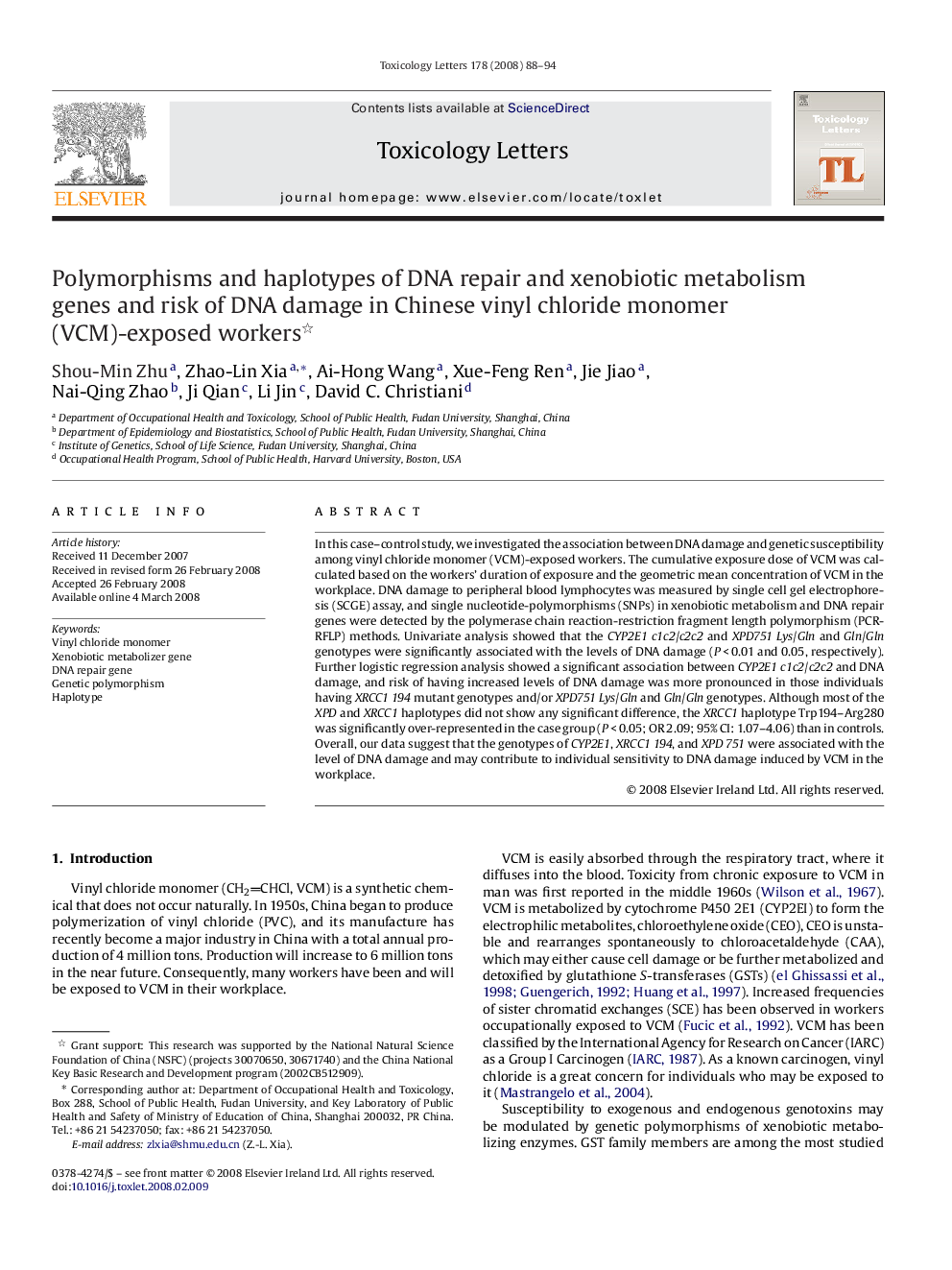| Article ID | Journal | Published Year | Pages | File Type |
|---|---|---|---|---|
| 2601847 | Toxicology Letters | 2008 | 7 Pages |
In this case–control study, we investigated the association between DNA damage and genetic susceptibility among vinyl chloride monomer (VCM)-exposed workers. The cumulative exposure dose of VCM was calculated based on the workers’ duration of exposure and the geometric mean concentration of VCM in the workplace. DNA damage to peripheral blood lymphocytes was measured by single cell gel electrophoresis (SCGE) assay, and single nucleotide-polymorphisms (SNPs) in xenobiotic metabolism and DNA repair genes were detected by the polymerase chain reaction-restriction fragment length polymorphism (PCR-RFLP) methods. Univariate analysis showed that the CYP2E1 c1c2/c2c2 and XPD751 Lys/Gln and Gln/Gln genotypes were significantly associated with the levels of DNA damage (P < 0.01 and 0.05, respectively). Further logistic regression analysis showed a significant association between CYP2E1 c1c2/c2c2 and DNA damage, and risk of having increased levels of DNA damage was more pronounced in those individuals having XRCC1 194 mutant genotypes and/or XPD751 Lys/Gln and Gln/Gln genotypes. Although most of the XPD and XRCC1 haplotypes did not show any significant difference, the XRCC1 haplotype Trp194–Arg280 was significantly over-represented in the case group (P < 0.05; OR 2.09; 95% CI: 1.07–4.06) than in controls. Overall, our data suggest that the genotypes of CYP2E1, XRCC1 194, and XPD 751 were associated with the level of DNA damage and may contribute to individual sensitivity to DNA damage induced by VCM in the workplace.
